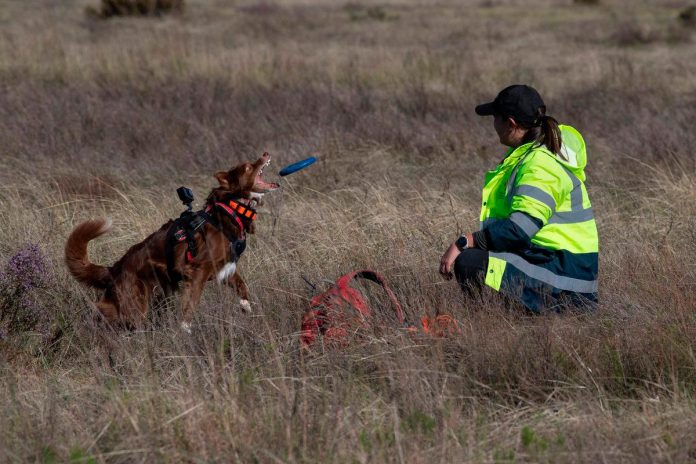BOLAND: Snout pressed to the ground, a border collie named Delta zigzagged through the shrubs on a private nature reserve near Cape Town, frantically sniffing for critically endangered tortoises. The dog stopped abruptly in front of a small bush and lay down, signalling a find as Delta’s handler moved in to search the surrounding area.
Hidden in the tall grass was a tiny reptile, its shell marked with yellow star-like patterns—a clear sign it was a geometric tortoise, a species found only at the southern tip of Africa. “It’s an adult female, you can tell by its flat belly,“ said Esther Matthew, the dog’s handler and a conservation officer for South Africa’s Endangered Wildlife Trust.
She explained that the organisation uses canines to sniff out the endangered species by “building positive association with the tortoises’ odour”, throwing Delta a foam frisbee as a reward. Dogs are five times more effective than humans at this type of search and “also help us find the smaller tortoises which are often overlooked, the hatchlings and the juveniles”, Matthew said.
The species’ population was already as low as 1,500 individuals in the wild in the early 1990s, according to biologist Andrew Turner, who works for the conservation authority Cape Nature. It is now estimated at only several hundred animals with “declines pretty much across the entire remaining range of this species”, he told AFP.
With the species’ natural habitat shrinking due to agriculture and urban expansion, these surveys have become all the more critical, Turner said. “There are very few places left in the Western Cape that still support these tortoises. It’s really just a couple of nature reserves and pieces of good habitat left on people’s private property,“ he added.
Poaching—of the tortoises and the plants they feed on—is also a threat, Turner said. “They are down to such small levels that they actually need as much assistance as they can get,“ he said.
To save the species, the Endangered Wildlife Trust has looked at building “partnerships” with landowners and communities living in the animals’ habitat. “The biggest thing is… creating corridors where species can work through,“ explained Zanne Brink, who leads the organisation’s dry lands conservation programme. – AFP








